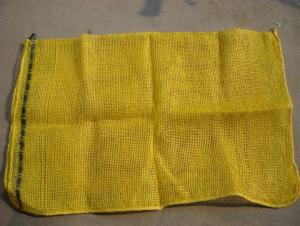Plastic plumbing pipe fittings have revolutionized the way we approach home and commercial plumbing. These versatile and efficient solutions have made it easier to manage water flow and maintain a reliable plumbing system. In this article, we will explore the benefits of using plastic plumbing pipe fittings, how to choose the right ones for your needs, and some tips for installation and maintenance.
The Evolution of Plumbing: From Metal to Plastic
Gone are the days when metal pipes were the only option for plumbing systems. The introduction of plastic plumbing pipe fittings has changed the game, offering a more cost-effective and lightweight alternative. Plastic pipes are easier to handle and install, making them a popular choice for both DIY enthusiasts and professional plumbers.
Benefits of Plastic Plumbing Pipe Fittings
1. Cost-Effectiveness: Plastic fittings are generally cheaper than their metal counterparts, making them an attractive option for those looking to save on plumbing costs.
2. Lightweight: The lightweight nature of plastic pipes makes them easier to transport and handle, reducing the physical strain on installers.
3. Corrosion Resistance: Unlike metal pipes, plastic pipes are resistant to corrosion, ensuring a longer lifespan and reducing the need for replacements.
4. Easy Installation: The design of plastic fittings often includes features that simplify the installation process, such as push-fit or solvent weld connections.
5. Versatility: Plastic pipes can be used in a wide range of applications, from residential homes to commercial buildings and even in agricultural settings.
6. Energy Efficiency: Due to their insulating properties, plastic pipes can help reduce heat loss, making them an energy-efficient choice.
Choosing the Right Plastic Plumbing Pipe Fittings
When selecting plastic plumbing pipe fittings, consider the following factors:
1. Material Type: There are various types of plastic materials used for pipe fittings, such as PVC, PEX, and CPVC. Each has its own set of properties and ideal applications.
2. Diameter and Length: Choose fittings that match the diameter and length of your existing pipes to ensure a proper fit.
3. Pressure Rating: Ensure the fittings can handle the water pressure in your system to prevent leaks or bursts.
4. Temperature Range: Some plastics have a limited temperature range, so it’s important to select fittings that can withstand the temperatures in your plumbing system.
5. Certifications: Look for fittings that meet industry standards and certifications to ensure quality and safety.
6. Aesthetics: While functionality is key, you may also want to consider the appearance of the fittings, especially if they will be visible.
Installation Tips for Plastic Plumbing Pipe Fittings
1. Prepare the Workspace: Ensure your workspace is clean and organized to facilitate a smooth installation process.
2. Measure Twice, Cut Once: Double-check your measurements before cutting the pipes to avoid mistakes and wasted materials.
3. Use the Right Tools: Invest in quality tools designed for working with plastic pipes to ensure a secure and leak-free connection.
4. Follow Manufacturer’s Instructions: Each type of plastic fitting may have specific installation instructions, so be sure to follow them carefully.
5. Test for Leaks: After installation, test the system for leaks to ensure everything is connected properly and functioning as intended.
6. Secure and Insulate: Once the fittings are in place, secure them properly and insulate them if necessary to prevent condensation or heat loss.
Maintenance and Troubleshooting
Proper maintenance of your plastic plumbing pipe fittings is essential for their longevity and performance. Here are some tips:
1. Regular Inspections: Periodically inspect your plumbing system for signs of wear, damage, or leaks.
2. Clean with Care: If cleaning is necessary, use products that are safe for plastic pipes to avoid damage.
3. Avoid Harsh Chemicals: Some chemicals can degrade plastic materials, so always check the compatibility before use.
4. Replace When Necessary: If a fitting is damaged or worn, replace it promptly to prevent further issues.
5. Stay Informed: Keep up-to-date with the latest advancements and best practices in plumbing to ensure your system remains efficient and safe.
The Future of Plastic Plumbing Pipe Fittings
As technology advances, we can expect to see even more improvements in plastic plumbing pipe fittings. Innovations in materials and manufacturing processes will likely lead to stronger, more durable, and longer-lasting fittings. Additionally, there may be developments in installation techniques that make the process even easier and more efficient.
In conclusion, plastic plumbing pipe fittings offer a practical and efficient solution for modern plumbing needs. By understanding the benefits, choosing the right fittings, and following proper installation and maintenance practices, you can enjoy a reliable and long-lasting plumbing system. So, the next time you’re faced with a plumbing project, consider the advantages of plastic and make an informed decision.

